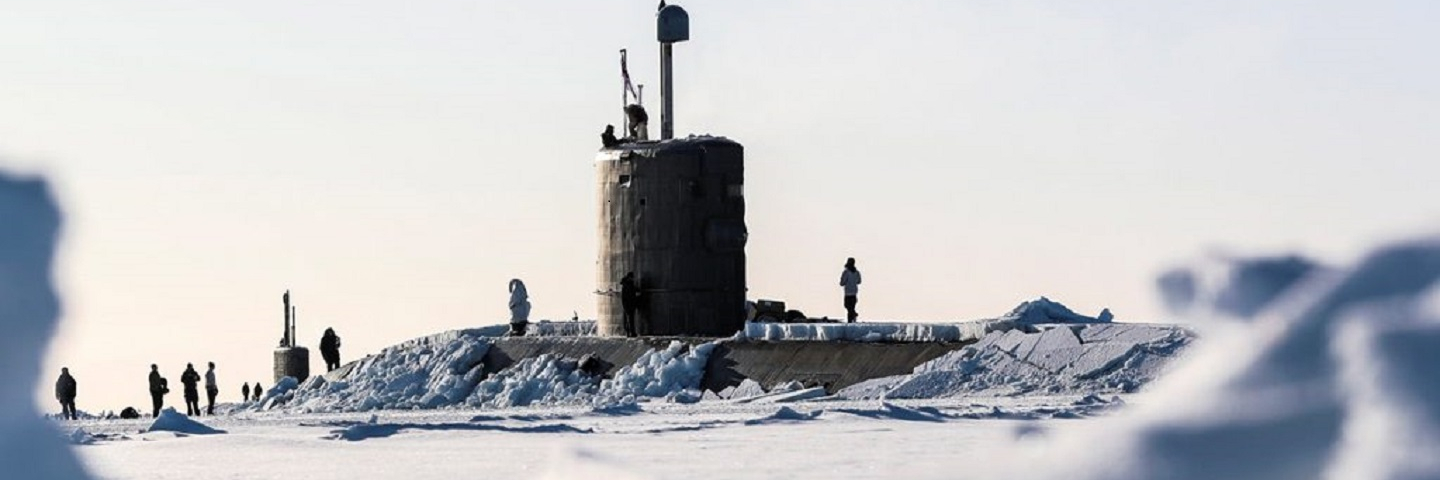
Perspectives from the Arctic as a Strategic Space: Geopolitics of the Northern Flank
Executive Summary
The George C. Marshall European Center for Security Studies and the Swedish Defense University hosted a conference on the “Arctic as a Strategic Space” bringing together Arctic experts and security practitioners from nations representing Europe’s Northern Flank, Germany, Canada, and the United States. The intent of the conference was to provide a forum for strategists, academics, and military professionals to identify, assess and discuss regional security challenges.
The panel presentations discussed competing great power interests in the context of a transforming climate introducing new economic opportunities amidst contentious claims. The Arctic remains a region of great scientific interest, rich in natural resources with an estimated thirty percent of the world’s conventional natural gas supply and thirteen percent of undiscovered global oil reserves.1 Each year, the Arctic is increasingly accessible to tourists and international commercial shipping to the detriment of the natural environment. Territorial disputes in the Arctic are ongoing, with rival claims by Russia, Norway, Denmark, Canada, and the United States.2 Yet the Arctic remains a space of international order. Arctic states submitted their competing claims to the UN Commission on the Limits of the Continental Shelf for scientific review. Efforts at cooperation and a unified outlook by international Coast Guards in the Arctic presented an optimistic view. Successive presentations at the conference identified main security concerns unique to each national actor. They also provided an overview and analysis of institutional and international responses. Participant interaction, discussion, and sharing of bilateral and multinational ideas allowed for creative solutions that will likely assist Arctic policy makers. Participants and organizers welcomed the planning of an annual conference to continue discussions, make further progress in cooperation and information sharing, and strengthen the network between academics, practitioners, and strategists working towards shared goals.
One overarching topic was the undeniable climate change the Arctic is experiencing at twice the rate of the global average. Since environmental security is subsequently linked to human security, the unprecedented transformation poses a global challenge that first impacts Arctic communities and wildlife, and then threatens coasts on every continent with sea level rise from melting sea ice and ocean acidification.3 All nations, Arctic, non-Arctic, and the self-professed “near-Arctic,” will need to strengthen resilience and make forward leaning policies to adapt in order to protect impacted populations. Second-order effects from climate change may also exacerbate conflict, increase migration patterns, and destabilize infrastructure. An optimistic takeaway from the discussions at the conference was that climate change can still be mitigated and the effects reduced to varying degrees if substantial, universal actions are taken. The politicization of climate change by certain Arctic states make a unified approach difficult in the near term. The possibility of reducing warming to two degrees Celsius above pre-industrial levels would require strong policy changes and strict application of climate accords.
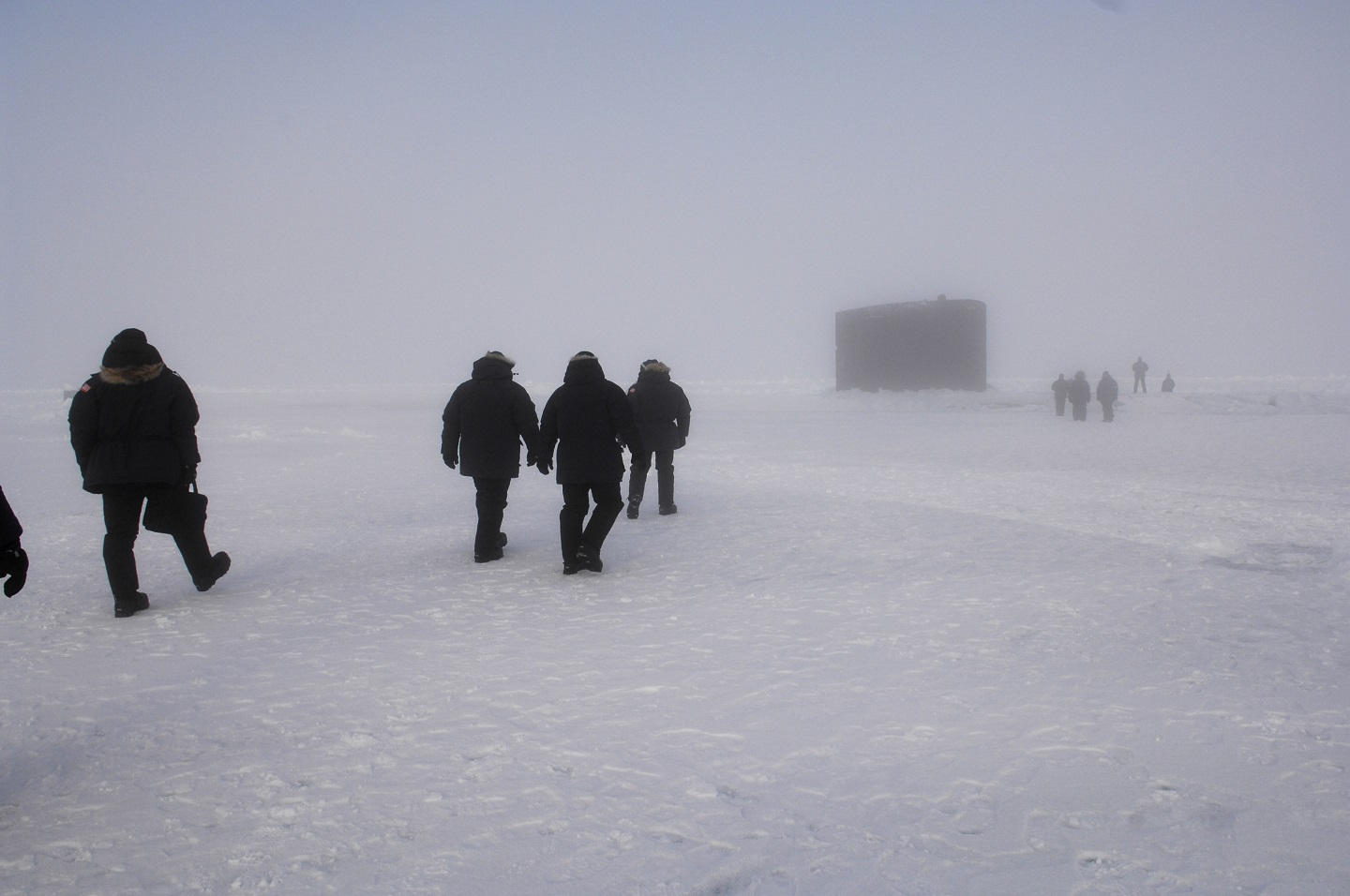
Regional Security Challenges from Multiple Perspectives
The diversity of panel speakers at the conference resulted in many unique interpretations of similar risks and opportunities present in today’s Arctic. One outcome was the realization that there are “multiple Arctics” perceived by the region’s great power actors. A concept of multiple Arctics is the distancing of geopolitical issues between the North American Arctic and European Arctic. However, one common thread echoed by multiple presenters was the emergence of China in the Arctic. China’s 2018 white paper clearly stated their objectives on Arctic policy, indicating Chinese interests in the Arctic go beyond previously stated scientific research to an economic and political presence.4 The Russian Arctic remains a topic of peaked international interest as well as concern among many neighboring Arctic states. The United States remains far behind other Arctic states in terms of preparedness to operate in the Arctic, lacking the capability to address regional challenges there. Even so, U.S. Secretary of State Mike Pompeo’s recent address to the Arctic Council created a stir that could signify a shift in focus to Arctic geopolitics.5 Canada remains assertive over control of the Northwest Passage with a stronger emphasis on the inclusion of indigenous peoples in Arctic affairs. The Russian and Chinese relationship on Arctic developments was explained as a tactical alliance, with Russia courting China and China having the ultimate decision to engage.
Nordic States
An impression from a variety of presenters is that the Kingdom of Norway walks a line between advancing a defensive posture and keeping an open door with all Arctic states. The 197-kilometer border between Russia and Norway make Russia a key strategic actor that at times has adversarial qualities. The Russian Bastian Defense Concept was perceived to be a threat to Norway.6 As a result, Norway’s defensive strategy encourages more NATO presence in the Arctic. The stationing of a U.S. aircraft carrier off the coast of Norway and NATO’s Trident Juncture 18 exercise are prime examples of increasing NATO capabilities in the High North. Trident Juncture 2018 conducted in November 2018 captured international attention as the largest and most complex military exercise in the Arctic since the height of the Cold War.7
On the other hand, Norway remains an engaging Arctic partner that was willing to work within the framework of the Arctic Council and even bilaterally to promote cooperation. For example, the 2010 Agreement between Norway and Russia over the Barents Sea dispute was a step towards bilateral conflict resolution.8 Territorial and access disputes in Svalbard came up at several points as a potential “grey-zone conflict.” The ambiguous legalities and increasing international interest in Svalbard make it a likely hotspot if tensions increase between primary Arctic actors.9 Norway’s assertiveness in Arctic security and territorial defense could lead to increasing tensions. However, the willingness to resort to the Arctic Council and the UN as governing bodies can provide a counter-balance to those projecting future escalation.
The presentation on the Swedish total defense concept and ensuing discussions portrayed a historically neutral Arctic player that experienced a strategic shift in Arctic policy in 2014. The total defense concept initiated in 1944 for citizen security during the Second World War and reactivated in 1966 during Cold War escalation, was only recently refitted in 2018 to include emergency management in its civil activation planning.10 Since the Cold War the Scandinavian states have chosen one of two options; Denmark and Norway have NATO as a key element of their defensive postures, while Finland and Sweden rely on an internal “whole-of-government” approach that includes civil resistance preparation, conscription and civil-military cooperation.11 In addition, bilateral partnerships further strengthen their defense capabilities. Initial planning started in 2014 for the new Swedish total defense using emergency management as its foundation. In so doing, Sweden is now able to address hybrid threats and a myriad of potential crises. The key aspects are reactivated conscription and prioritized civilian involvement from the local level with the potential to support military operational capacity. The total defense exercise planned for 2020 will provide a “proof of concept” engaging military and civilian personnel. The Swedish approach to Arctic security remains one of prudent neutrality, with strengthened internal defense as an external and internal message.
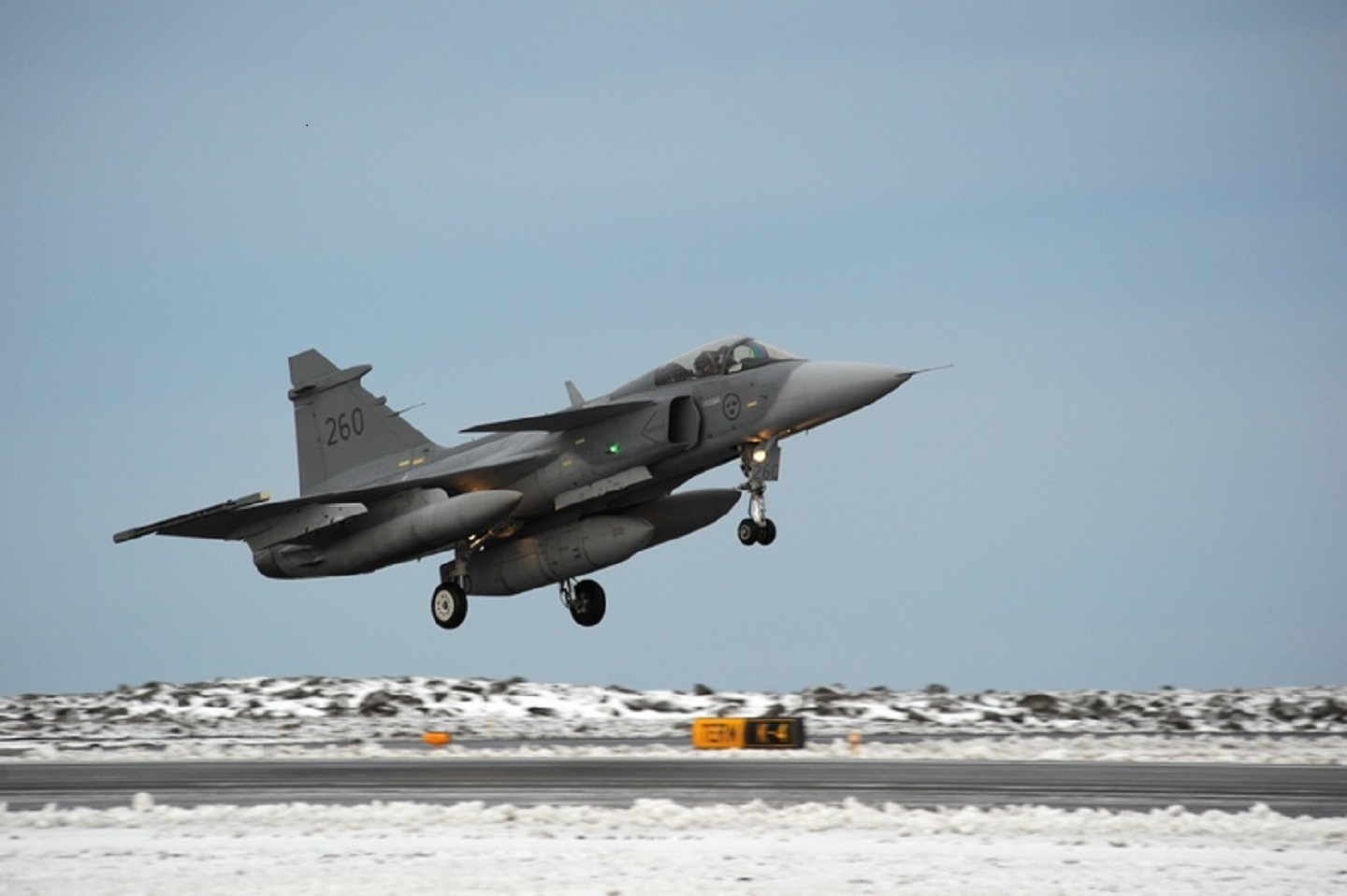
Sweden’s neighbor, Finland, shares a prepared yet cooperative mentality towards great powers. A difference is that Finland has always kept a high defensive posture even after the Cold War. The Finnish perspective noted was the linking of tensions in the Baltic Sea region and the Arctic. Although the risk of military conflict remains low, the geopolitical situation is charged and escalation is a possibility. Meanwhile, Finland sees an impending great power competition evidenced by the return of the U.S. Second Fleet and the rhetoric of U.S. Secretary of State Pompeo this past May.12 Russia’s protection of Arctic resources and access to the Northern Sea Route (NSR) opposes the U.S. and China’s push for freedom of movement. The expectation is that Russia will continue to strengthen its position militarily in the Arctic for a long-term presence. Its cruise and long-range missiles have the reach to directly impact Norway, Sweden, and Finland. In response, Finland improved the readiness of its military in 2014 and 2017, increasing troop numbers and the refurbishment of their Navy and Air Force.13 All government agencies have proposed reforms and amendments to increase Finland’s security posture. Changes include conventional methods such as increased conscription and interagency soft power to address hybrid threats. The “whole-of-government” approach also includes business cooperation. For security partnerships, Finland shares a close security partnership with Sweden. Finland is also a member of two regional organizations, the Nordic-Baltic Cooperation and Nordic Defense Cooperation (NORDEFCO), which address common issues in the political and security sectors and provide a forum for crisis consultation.
Iceland’s internal challenges are a shortage of infrastructure and great distances between communities that make them vulnerable to the environment. At the same time, international industry investors are increasingly interested in Iceland bringing a new level of activity.14 The Icelandic Coast Guard has operational defense related tasks included in its responsibilities. The territorial waters around Iceland are in the Arctic, and the Icelandic Coast Guard conducts search and rescue with meager resources in relation to the expansive territory. There is regional cooperation to aid in fisheries surveillance and a rescue coordination center with Canada and Norway.15 Arctic security from Iceland’s perspective relies on NATO, a U.S. bilateral partnership, and NORDEFCO. Through its partnership with NATO, Iceland contributes to the NATO integrated missile defense system. The Arctic Coast Guard Forum is another cooperative body able to assist in Search and Rescue (SAR), environmental response in case of an oil spill, research and analysis, and line exercises. Iceland will take over the Arctic Council chairmanship this year, and will be the subject of the first Arctic regional environmental response tabletop exercise in the spring of 2020.16
European Union (EU)
The EU became actively present in the Arctic in the 1990s with the Barents Euro-Arctic Council and the entry of Finland and Sweden to the EU. Climate change was the driving factor that captured the EU’s focus for Arctic policy. As a result, it established a regulatory and research footprint, and sought to influence Arctic regimes. The EU is also actively engaged in the Arctic through fishing and trade agreements. “The European Commission laid the cornerstone for a fully-fledged Arctic policy in its Communication ‘The European Union and the Arctic Region’ of November 2008.”17 Furthermore, the European Union has several resolutions and individual policies in force that address climate change, environmental protection, sustainable economic development, research, and rights of indigenous people. One reason why the EU’s has not been fully accepted as an Arctic player is the negative reaction by some Arctic states to its first Arctic resolution. The ban on seal hunting is why Canada initially blocked the EU’s request to become an Arctic Council observer. Regardless of its official status, the EU has three Arctic member states that are supportive of the EU’s position on the Arctic. In June, the European Political Strategy Centre is expected to release an ambitious policy for the Arctic that will include a geopolitical analysis.18
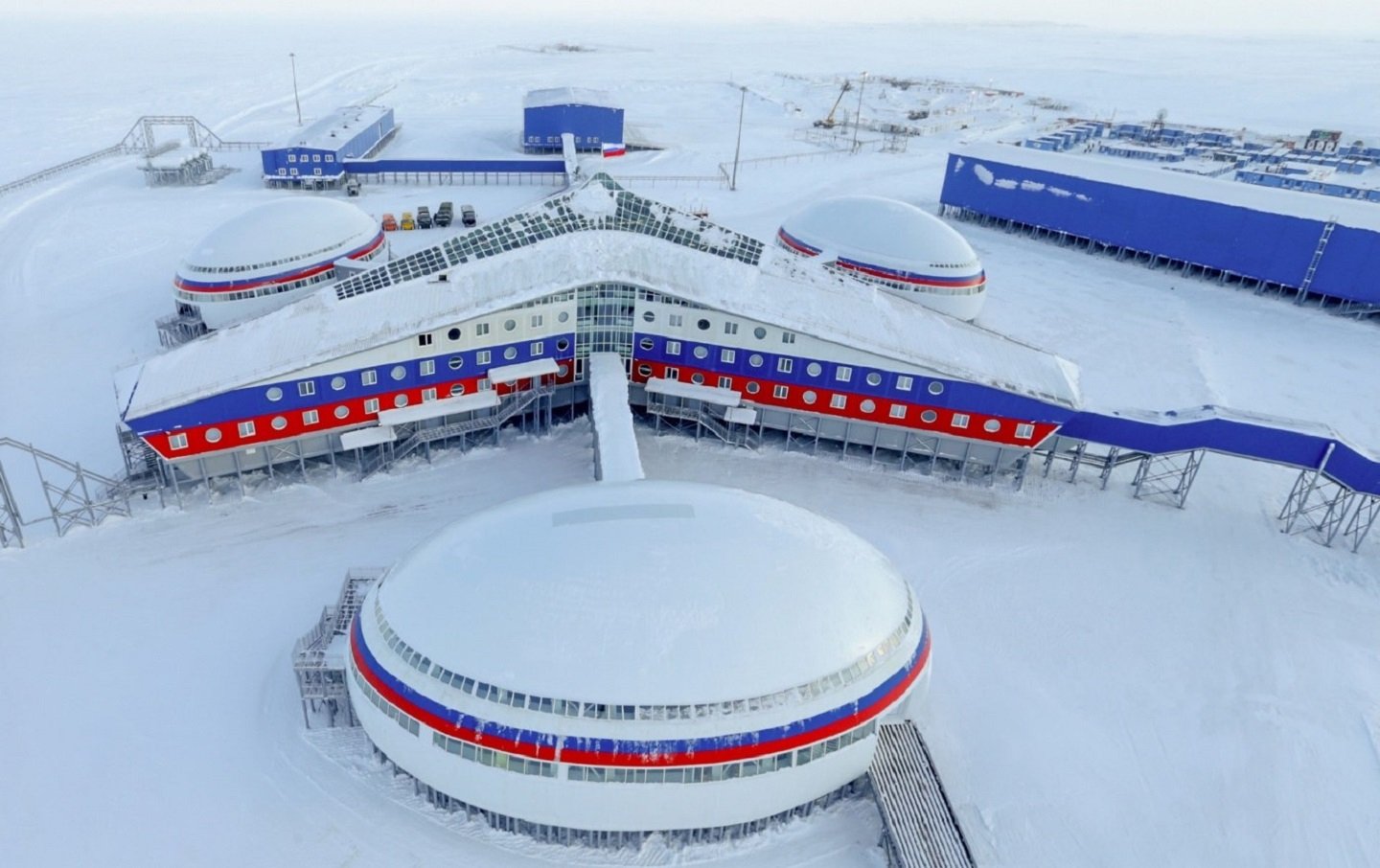
Russia
The Russian position was a recurring topic brought up by multiple panels in different contexts. For the Russian Federation, the Arctic is of great strategic importance. It is home to over two million people, and is the greatest global Arctic population.19 The Arctic is important economically, contributing ninety percent of Russia’s domestic gas consumption20 and thirty percent of Russia’s gross domestic product in 2018.21 The Russian statement in 2007 and the planting of the Russian flag at the North Pole were considered by most to be the start of Russia’s geopolitical rise in the Arctic. Since then, Russia has refurbished old bases, built new icebreakers and nuclear submarines, stood up the Northern Fleet Joint Strategic Command, and reinstated its Bastion missile system. Russia guards the NSR as its internal infrastructure vital to its economy. President Putin advertises the NSR as a viable commercial route with the goal of shipping eighty million tons through the NSR by 2024.22 Russian regulations require icebreaker escort and Russian pilotage to meet safety standards while allowing Russia to profit from its use. Additionally, Russia is partnering with China for investment in its Arctic fossil fuels. The partnership is economic in nature with political distrust preventing a deepening of the relationship. China is building its own icebreakers that could provide an alternative if Russia’s conditions are no longer palatable to China, which could become a source of future conflict between the two powers.23 An additional reason for Russia’s tight control of the NSR is to prevent western expansion into its domain. Russia is building up defense capabilities for SAR and to posture against NATO activity in the North Atlantic as referenced in strategic documents.24 Russia has vested interests in the Arctic, and from its perspective, is enclosed by NATO adversaries. Two points of view were debated: Russia as a cooperative Arctic player and Russia as a resurging aggressor. Russia has a long history of cooperation in the Arctic, particularly for adherence to Arctic governance bodies. The other perspective pointed to Russia’s securitization of the NSR and military activities in the Baltic and surrounding Norway. The Svalbard archipelago is one example of a hotspot vulnerable to potential aggression in the Arctic.
United States
The U.S. is less active in the Arctic than its circumpolar neighbors. Summarized in the statement by the U.S. Secretary of the Navy, “everyone’s up there but us.”25 Despite the low prioritization of the Arctic, the U.S. does exert a presence with its Northern NATO allies. There are 700 U.S. Marines that rotate to Vaernes, Norway,26 training bases in Setermoen and Hell, Norway, and the U.S. base in Thule, Greenland. Like its European partners, the U.S. recognizes Russia’s increasing security capabilities in the Arctic. The statement by Secretary of State Pompeo to the Arctic Council presented a paradigm shift from a peaceful, cooperative Arctic to one of heightened tensions and great power competition.27 Rhetoric aside, the U.S. remains unprepared to exert power from the Arctic. The U.S. has only one icebreaker online in the Arctic, which is one of many examples of the current lack of operational capability. The Arctic may appear far removed from the interests of the mainland, but there are economic interests also at play. Through Alaska, the U.S. has about one million square miles of Arctic Exclusive Economic Zone (EEZ), a seafood industry worth six billion U.S. dollars, an estimated ninety-million barrels of undiscovered oil, and an even greater amount of rare earth minerals.28 If the U.S. takes more of a stand in the Arctic, it would require substantial resources, and five to ten years to build up capability.
Canada
For Canada, the Arctic is linked to national identity, a characteristic shared with Russia. Canada’s Arctic Foreign Policy Statement clearly states Canada’s position as follows: “Exercising sovereignty over Canada’s North, as over the rest of Canada, is our number one Arctic foreign policy priority.”29 Canada runs counter to the freedom of navigation that the U.S., China, and other non-Arctic states promote. Climate change means greater accessibility and an increasing international interest in Northwest Passage, which for the Canadian government, also means a stronger focus on domestic security, surveillance, and sea route control. Canada has an extensive legislative and regulatory framework that covers environmental protections, indigenous treaties, trade, and support for international agreements such as the UN Convention on the Law of the Sea. In the Arctic, the Canadian Armed Forces (CAF) also have a non-military role. The Canadian Defence Strategic and Operational Framework extends information sharing to allies. The Trudeau administration has made subtle changes to Arctic policy, focusing on indigenous inclusion and strengthening territorial control. There are now 1800 Rangers, primarily indigenous, working in the northern provinces. They train to guide and instruct conventional Canadian forces if the need arises.30 Canada promotes international Arctic cooperation equally with defense of sovereignty, promoting the Arctic Council and UNCLOS as legitimate governing bodies. The 2017 Defence Policy highlights Canada’s recognition of the Arctic Council as a cooperative body to address challenges of a transforming Arctic.31 Canada identifies common areas for cooperation in environmental protection, sustainable development, SAR, scientific research, and governance.32
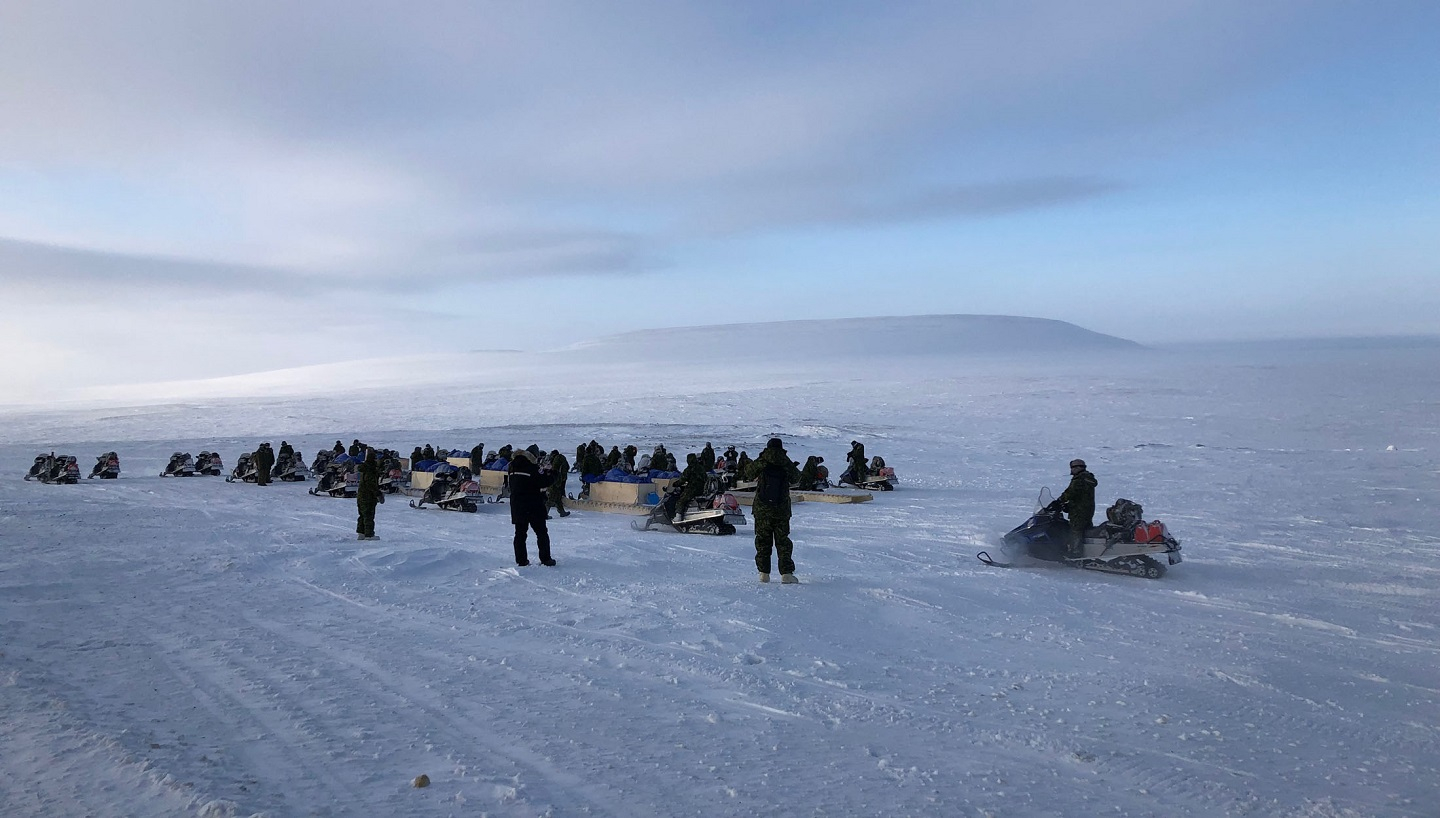
Canadian Armed Forces prepare for long-range patrols in Resolute, Nunavut as part of Operation NANOOK-NUNALIVUT 2019.
Reflections
A theme observed at this conference was a return to great power projection in the Arctic, although perspectives of the east and west were divided. Russia’s increasing security infrastructure coupled with the annexation of Crimea and hybrid threats make Russia a rising concern from the Scandinavian and Baltic states’ perspectives. One outlook applied three strategies for relations with Russia based on geography, cooperation in the north, deterrence to the east, and opposition in the south based on different geopolitical contexts. Cooperation in the north is becoming more and more contested. At the current stage, this is not a return to the Cold War. Capabilities and tensions in the Arctic remain far below those at the height of the Cold War. Stakes are not as high to secure interests in the Arctic. The U.S. remains distant from the Arctic. However, some experts from northern Europe still see the potential for low-level conflict. Svalbard was discussed several times as a tinderbox situation for a possible “grey-zone conflict” in the future. One risk discussed throughout the conference was a warning of a renewed security dilemma in the Arctic driven by national interests, climate change, and regional securitization.
Canada is largely removed from European security concerns and tends to agree with the Russian perspective of territorial control of Arctic sea routes and EEZs. The U.S. has very recently identified a great power struggle, and is trying to exert an influence that it does not currently have in the Arctic. The disagreement between Canada and the U.S. about freedom of navigation through the Arctic reflects a similar difference in interpretation by Russia and China. The multiple overlapping territory claims are non-contentious overall. The Arctic remains unprofitable for resource extraction and bilateral accords have worked out singular disputes between Arctic states. At the moment, all Arctic states and China appear willing to permit the UN to delineate territory and allow sovereign control of territorial waters providing that those nations also bear the responsibility. If the climate in the Arctic continues to heat up following the worst of predicted models, the Transpolar Sea Route could become a route to circumvent national waters and costly impositions.
A recurring theme was the growing role of China. Although there was not a specific panel nor presentation dedicated to China in the Arctic, many presenters discussed China as part of great power competition in the Arctic. China’s 2018 Arctic policy white paper captured attention, as China openly discussed economic and political aims in the region along with the longstanding environmental research focus. China is cautiously seeking investments in Greenland and the Russian Arctic. So far, China has reiterated its respect for Arctic governance institutions and gives the impression that it is waiting for acknowledgement of its growing role and place at the table. The China-Russia bilateral relationship is of growing economic interdependence, but China in a stronger position. The interest in China’s developing role will likely play a part in future conferences and seminars.
On a positive note, cooperation in Search and Rescue (SAR), science and research is a strength and source of optimism in Arctic dynamics. The international Arctic Coast Guard Forum is one example of positive steps to address insecurities posed by the extreme natural conditions and growing activity. During the conference, Coast Guard representatives were able to share anecdotes about common challenges and propose possible mitigation to those challenges. The Arctic Council has furthered efforts at SAR from the top, as it has with climate concerns, sustainable development, SAR and other major areas of Arctic policy.
The Arctic Council has one mentioned limitation, the exclusion of security as a topic. This limitation can be considered as a necessary precondition to continued progress and cooperation in the region. The topic and possible propositions could make an interesting future subject to be discussed. The Swedish Defence University and the George C. Marshall European Center for Security Studies will continue their common effort to discuss Arctic security and its consequences.
For Academic Citation
Michelle Angeline Miller and Andreas Hildenbrand, “Perspectives from the Arctic as a Strategic Space: Geopolitics of the Northern Flank,” Marshall Center Security Insight, no. 38, July 2019, https://www.marshallcenter.org/en/publications/security-insights/perspectives-arctic-strategic-space-geopolitics-northern-flank-0.
Notes
1 Harri Mikkola and JuhaKapyla, “Arctic Economic Potential: The Need for a Comprehensive and Risk-Aware Understanding of Arctic Dynamics,” FIIA Briefing Paper 127, Finnish Institute of International Affairs (FIIA). April 2013, https://www.fiia.fi/en/publication/arctic-economic-potential.
2 European Environment Agency, “Arctic continental shelf claims,” June 14, 2017, https://www.eea.europa.eu/data-and-maps/figures/arctic-continental-shelf-claims.
3 National Snow and Ice Data Center, “Sea Ice Index,” https://nsidc.org/data/seaice_index (accessed May 28, 2019).
4 The State Council Information Office of the People’s Republic of China, “China’s Arctic Policy,” January 26, 2018, http://english.gov.cn/archive/white_paper/2018/01/26/content_281476026660336.htm.
5 The Arctic Institute, “The Arctic Institute’s Reaction to Secretary of State Mike Pompeo’s speech in Rovaniemi, Finland ahead of the Arctic Council Ministerial Meeting,” Press Release, May 06, 2019, https://www.thearcticinstitute.org/reaction-secretary-state-mike-pompeos-speech-rovaniemi-finland-arctic-council-ministerial-meeting.
6 Atle Staalesen, “Former defense chief sees a serious Russian threat against Norway’s Finnmark region,” The Barents Observer, September 19, 2018, https://thebarentsobserver.com/en/security/2018/09/former-norwegian-defense-chief-sees-serious-russian-threat-against-norways-finnmark.
7 Aric Ramsey, “Trident Juncture 2018: Lessons for the North Atlantic,” US Naval Institute Proceedings 145, no. 3, March 2019: 26–30, https://www.usni.org/magazines/proceedings/2019/march/trident-juncture-2018-lessons-north-atlantic.
8 Walter Gibbs, “Russia and Norway Reach Accord on Barents Sea,” New York Times, April 27, 2010, https://www.nytimes.com/2010/04/28/world/europe/28norway.html.
9 James Wither, “Svalbard: NATO’s Arctic ‘Achilles’ Heel” RUSI Journal, November 2018, 28-37.
10 Björn von Sydow, “Resilience: Planning for Sweden’s ‘Total Defence’,” NATO Review Magazine, April 4, 2018, https://www.nato.int/docu/review/2018/Also-in-2018/resilience-planning-for-swedens-total-defence/EN/index.htm.
11 “Development of modern total defence,” Government Offices of Sweden, 11 June 2018, https://www.government.se/articles/2018/05/development-of-modern-total-defence.
12 The Arctic Institute, “The Arctic Institute’s Reaction to Secretary of State Mike Pompeo’s speech in Rovaniemi, Finland ahead of the Arctic Council Ministerial Meeting,” Law and Governance, Press Release, May 06, 2019, https://www.thearcticinstitute.org/reaction-secretary-state-mike-pompeos-speech-rovaniemi-finland-arctic-council-ministerial-meeting/.
13 Government’s Defence Report 07/2017, Chapter 4, https://www.defmin.fi/files/3688/J07_2017_Governments_Defence_Report_Eng_PLM_160217.pdf.
14 Valdimar Ármann, “Infrastructure Investor: Time for investors to follow tourists to Iceland,” GAMMA, November 5, 2018, accessed on July, 12 2019, https://www.gamma.is/en/news/time-for-investors-to-follow-tourists-to-iceland.
15 Arne F. Finne, “A joint Arctic emergency response network gets underway,” High North News, 29 January 2019, https://www.arctictoday.com/a-joint-arctic-emergency-response-network-gets-underway/.
16 “Fifth Joint Arctic SAR Workshop and TTX 2020,” Association of Arctic Expedition Cruise Operators, https://www.aeco.no/events/fifht-joint-arctic-sar-workshop-and-ttx-2019.
17 EU Arctic Policy, Federal Ministry for the Environment, Nature Conservation and Nuclear Safety, https://www.bmu.de/en/topics/sustainability-international/international-environmental-policy/multilateral-cooperation/the-arctic/arctic-policy.
18 Martin Breum, “EU President Expedites EU’s Arctic Policy,” High North News, 25 February 2019, https://www.highnorthnews.com/en/eu-president-expedites-eus-arctic-policy.
19 “Russia,” The Arctic Institute, https://www.thearcticinstitute.org/countries/russia.
20 Dag Harald Claes, Arild Moe, and Svein Vigeland Rottem, “Arctic Hydrocarbon Developments: State Interests and Policies,” in Arctic Governance Volume II: Energy, Living Marine Resources and Shipping, ed. Ida Folkestad Soltvedt, Svein Vigeland Rottem, and Geir Hønneland, 26 (London: I.B.Tauris, 2018).
21 Marion Candau, “Russia’s Economy: Still Dependent on Oil,” EURACTIV. March 22, 2018, https://www.euractiv.com/section/energy-environment/news/russias-economy-still-dependent-on-oil/.
22 Joel K. Bourne Jr., “See Russia’s massive new gas plant on the Arctic coast,” National Geographic, March 22, 2019, https://www.nationalgeographic.com/environment/2019/03/sabetta-yamal-largest-gas-field.
23 Liu Zhen, “Could China’s ‘experimental’ ship be the world’s biggest nuclear-powered icebreaker?” South China Morning Post, March 20, 2019, https://www.scmp.com/news/china/military/article/3002455/china-build-30000-tonne-nuclear-powered-ship-described.
24 Barbara Kunz, “Northern Europe’s Strategic Challenge from Russia: What Political and Military Responses?” IFRI Russia/NIS Center, October 2018, https://www.ifri.org/sites/default/files/atoms/files/rnv 111 kunz northern europe strategic challenge from russia 2018.pdf.
25 Center for Strategic & Security Studies, “Maritime Security Dialogue: A Conversation with Hon. Richard V. Spencer, Secretary of the Navy,” December 6, 2018, https://www.csis.org/analysis/maritime-security-dialogue-conversation-hon-richard-v-spencer-secretary-navy.
26 Kyle Rempfer, “New Marine rotation arrives in Norway as Corps preps for a cold-weather fight,” Marinetimes, March 29, 2019, https://www.marinecorpstimes.com/news/your-military/2019/03/29/new-marine-rotation-arrives-in-norway-as-corps-preps-for-a-cold-weather-fight.
27 The Arctic Institute, “The Arctic Institute’s Reaction to Secretary of State Mike Pompeo’s speech in Rovaniemi, Finland ahead of the Arctic Council Ministerial Meeting,” Law and Governance, Press Release, May 06, 2019, https://www.thearcticinstitute.org/reaction-secretary-state-mike-pompeos-speech-rovaniemi-finland-arctic-council-ministerial-meeting.
28 U.S. Geological Survey, 2008, https://www.usgs.gov/media/audio/90-billion-barrels-oil-and-1670-trillion-cubic-feet-natural-gas-assessed-arctic.
29 “Statement on Canada's Arctic Foreign Policy: Exercising Sovereignty and Promoting Canada’s Northern Strategy Abroad,” Government of Canada, 2010, http://publications.gc.ca/site/eng/9.833064/publication.html.
30 Canadian Armed Forces, “Strong, Secure, Engaged: Canada's Defence Policy,” Department of National Defense, 2017, http://publications.gc.ca/site/eng/9.835971/publication.html.
31 Ibid.
32 The Munk-Gordon Arctic Security Program, “Canada as an Arctic Power: Preparing for the Canadian Chairmanship of the Arctic Council (2013-2015),” Munk School of Global Affairs, May 2012, https://www.arctic-report.net/wp-content/uploads/2012/06/Canada-as-an-Arctic-Power.pdf.
About the Authors
Michelle Angeline Miller is pursuing a master's degree in European Governance at the Institut des Études Politiques in Grenoble, France with a focus on Arctic security and geopolitics. She holds a MA in Political Science (Transatlantic Studies) from the University of North Carolina at Chapel Hill, and a Bachelor of Science in Comparative Politics and French from the U.S. Military Academy.
CDR Andreas Hildenbrand is the Program Director of the European Security Seminar North at the George C. Marshall European Center for Security Studies. In this function, his professional focus is Arctic security policy, security implications of climate and environmental changes. During his career Commander Hildenbrand was the Executive Officer to the Deputy Chief of Staff at NATO Headquarters Allied Forces Northwestern Europe in High Wycombe, Great Britain. His responsibilities included the analyses of activities in the Arctic and Europe’s Northern Flank and the presentation of the Headquarters in related working groups. He studied aeronautical engineering at the University of the Armed Forces in Munich and earned a diploma (Master’s degree) as a Diplom-Ingenieur.
The Marshall Center Security Insights
The George C. Marshall European Center for Security Studies in Garmisch-Partenkirchen, Germany, a German-American partnership, is committed to creating and enhancing worldwide networks to address global and regional security challenges. The Marshall Center offers fifteen resident programs designed to promote peaceful, whole of government approaches to address today’s most pressing security challenges. Since its creation in 1992, the Marshall Center’s alumni network has grown to include over 13,985 professionals from 157 countries. More information on the Marshall Center can be found online at www.marshallcenter.org.
The articles in the Security Insights series reflect the views of the authors and are not necessarily the official policy of the United States, Germany, or any other governments.